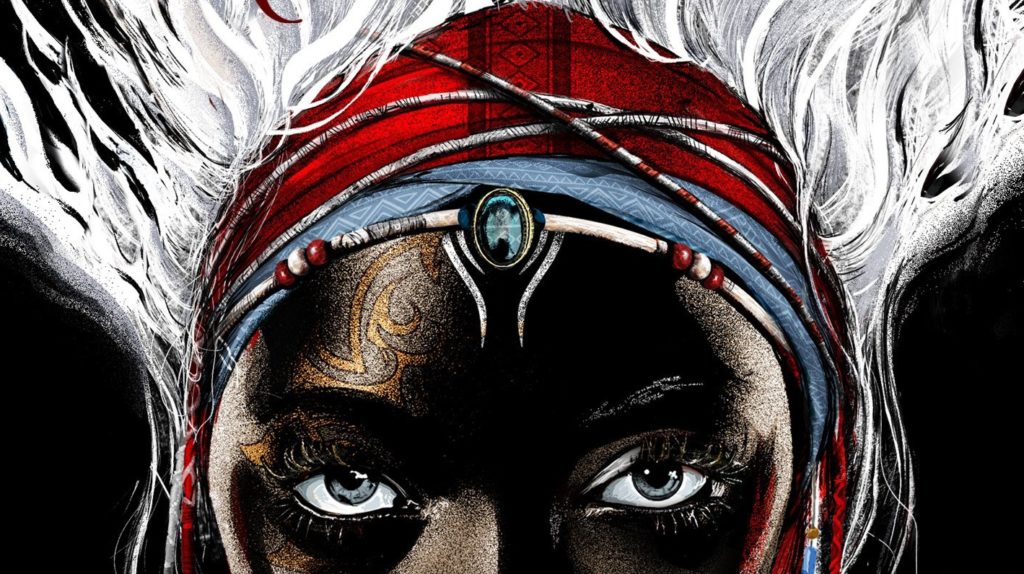The “Women of the World” book for April is one that I’ve been saving. When I started this project, I knew that Tomi Adeyemi’s Children of Blood and Bone would have to be one of my novels. And so, as a sort of “save dessert for last” exercise, I attempted to wait to read Children of Blood and Bone until further into the year. Obviously, I didn’t make it very far.
For those of you who may not know, Adeyemi’s Children of Blood and Bone was the most anticipated young adult novel of 2018. Appearing on shelves around the same time as Black Panther, the timing for a novel driven by black girl magic could not have been better.
Before it was even released, Children of Blood and Bone had already garnered an agreement to publish the final two books of what will ultimately become the Legacy of Orïsha series, as well as a massive film deal. The second book, Children of Virtue and Vengeance, is set to for release this coming December.
Needless to say, Adeyemi brilliantly draws on a deep cultural need—the need to expand the black narrative beyond slave stories and into the realm of fantasy and fiction, sharing black culture in a way that acknowledges a fuller past and promises a future in which oppression will finally, ultimately fail.
Just as I finished Children of Blood and Bone, Beyoncé released Homecoming on Netflix, and I couldn’t help noticing how appropriate the timing was. The opening of Homecoming features the voice of Nina Simone remarking, “To me, we are the most beautiful creatures in the whole world, Black people,” and what follows is a 2 hour glorious celebration of Black culture and identity in America. In the same way, Children of Blood and Bone is the same beautiful presentation of blackness. In no way does it ignore the violence of slavery and oppression (in fact, it has its basis there), but rather Adeyemi pushes beyond the prescribed boundaries of these topics and into the realm of celebration. Like Bey says, “It’s just so much damn swag.”
Children of Blood and Bone
Tomi Adeyemi is a Nigerian-American author and Harvard graduate who wrote and published her debut novel by age 23. A child of first generation immigrants, Adeyemi’s parents chose not to teach her about her home culture or language, and she did not begin to explore her heritage until age 18. However, while at Harvard, Adeyemi would earn a fellowship that would allow her to study her West African heritage in Salvador, Brazil. There, the positive presentation of Black culture, as well as the ongoing violence of police brutality and controversy of the Black Lives Matter movement in America, would inspire Adeyemi to write Children of Blood and Bone. On her blog, Adeyemi wrote, “I want a little Black girl to pick up my book one day and see herself as the star […] I want her to know that she’s beautiful and she matters and she can have a crazy, magical adventure even if an ignorant part of the world tells her she can never be Hermione Granger.”
However, much like Hermione Granger, Adeyemi’s main character, Zélie, is also in search of her own magic. A maji in the land of Orïsha, Zélie is a member of the lowest class. Marked by her dark skin and white hair, Zélie is constantly in a battle to protect her own life as the dominant class, the kosidán, perpetuate the oppression of the maji people by taking away their magical abilities. Zélie, along with her brother, Tzain, and a kosidán noble named Amari, go on an epic journey to restore magic and free the maji of Orïsha from the oppression of the kosidán.
The best part of Children of Blood and Bone is that it fulfills all of the expectations of a fantasy novel, while also weaving together a captivating cast of characters. In many ways, the book is more about the characters themselves than the events or the story. The chapter titles reflect the perspective of the character narrating that particular section of the novel and the changing first-person perspectives allow us to get to know all of the main characters without feeling overburdened by one character’s voice. Because many of the main characters’ voices are in opposition to one another, this organizational detail is particularly important. It allows us to understand each character’s perspective in a way that makes all of their choices seem like the exact ones that we would have to make as well. Even when we know things can’t go well, Adeyemi writes the characters in a way that makes us deeply identify with their struggle.
In a world where we are thirsty for companionship and hungry to be understood, Adeyemi delivers a novel that thrives off of the intimacy we feel with her characters. I am lucky as a young, white woman to be able to list off numerous characters that were written for me and with whom I deeply identify. Yet, it is an equally incredible experience to read a book that provides this same adventure for women of color. Please note that just because Children of Blood and Bone wasn’t written for me specifically doesn’t mean that Adeyemi didn’t write a novel for everyone. Just as people of all backgrounds and cultures have loved and seen parts of themselves in characters like Hermione in Harry Potter and Meg in A Wrinkle in Time, so I also identified with characters in this novel. But, more importantly, Adeyemi satisfies a deeper desire in our world, asserting that true reconciliation demands that we appreciate the fullness and beauty and power of black girl magic.



Comments are closed.